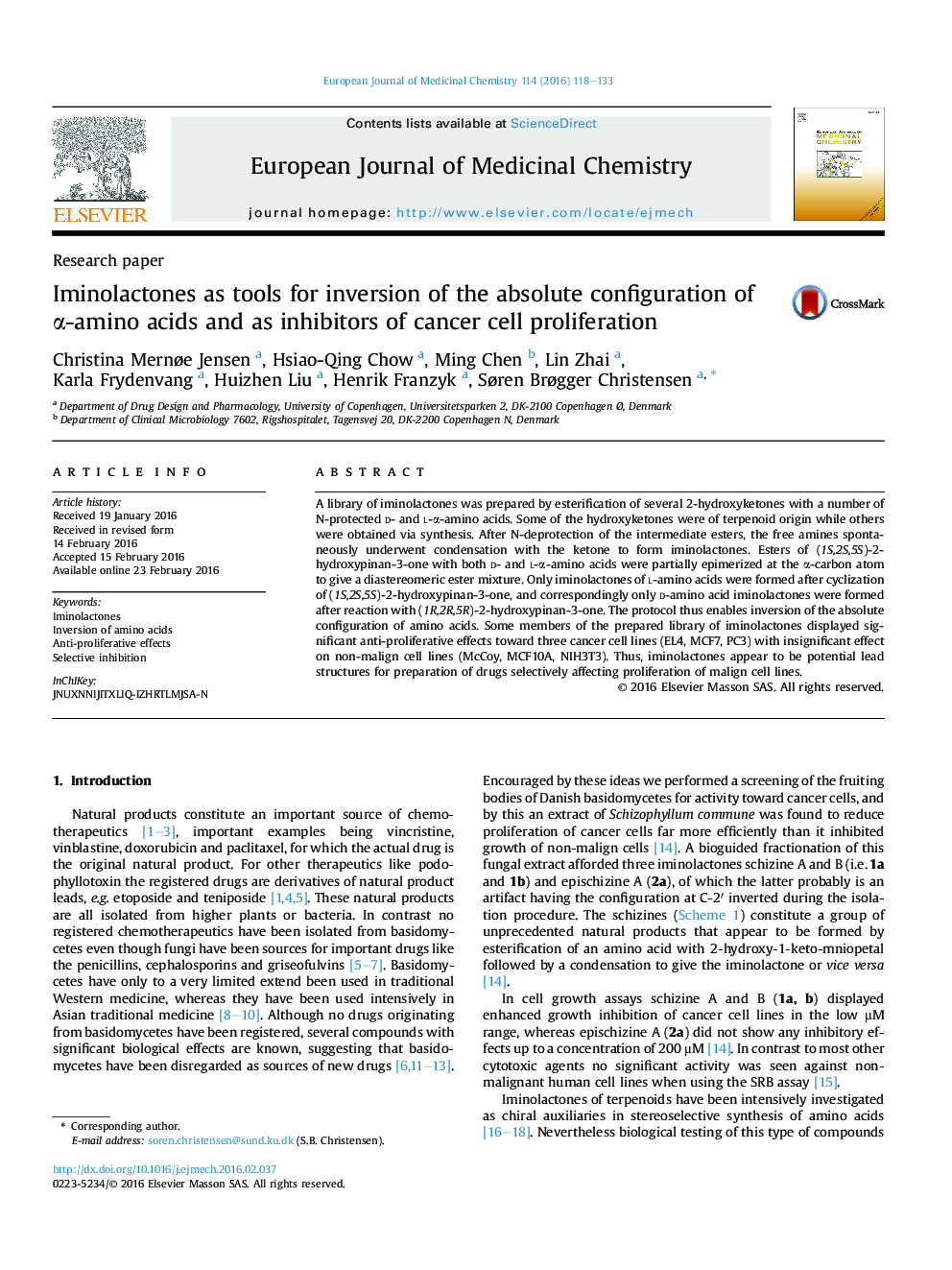| Article ID | Journal | Published Year | Pages | File Type |
|---|---|---|---|---|
| 1398637 | European Journal of Medicinal Chemistry | 2016 | 16 Pages |
•Iminolactones selectively inhibits the proliferation of cancer cell lines.•Only a-l-amino acids can form iminolactones with (1S,2S,5S)-2-hydroxypinan-3-one.•The configuration of a-amino acids may be inverted via iminolactones.•Iminolactones are a new lead structures for chemotherapeutics.
A library of iminolactones was prepared by esterification of several 2-hydroxyketones with a number of N-protected d- and l-α-amino acids. Some of the hydroxyketones were of terpenoid origin while others were obtained via synthesis. After N-deprotection of the intermediate esters, the free amines spontaneously underwent condensation with the ketone to form iminolactones. Esters of (1S,2S,5S)-2-hydroxypinan-3-one with both d- and l-α-amino acids were partially epimerized at the α-carbon atom to give a diastereomeric ester mixture. Only iminolactones of l-amino acids were formed after cyclization of (1S,2S,5S)-2-hydroxypinan-3-one, and correspondingly only d-amino acid iminolactones were formed after reaction with (1R,2R,5R)-2-hydroxypinan-3-one. The protocol thus enables inversion of the absolute configuration of amino acids. Some members of the prepared library of iminolactones displayed significant anti-proliferative effects toward three cancer cell lines (EL4, MCF7, PC3) with insignificant effect on non-malign cell lines (McCoy, MCF10A, NIH3T3). Thus, iminolactones appear to be potential lead structures for preparation of drugs selectively affecting proliferation of malign cell lines.
Graphical abstractFigure optionsDownload full-size imageDownload as PowerPoint slide
